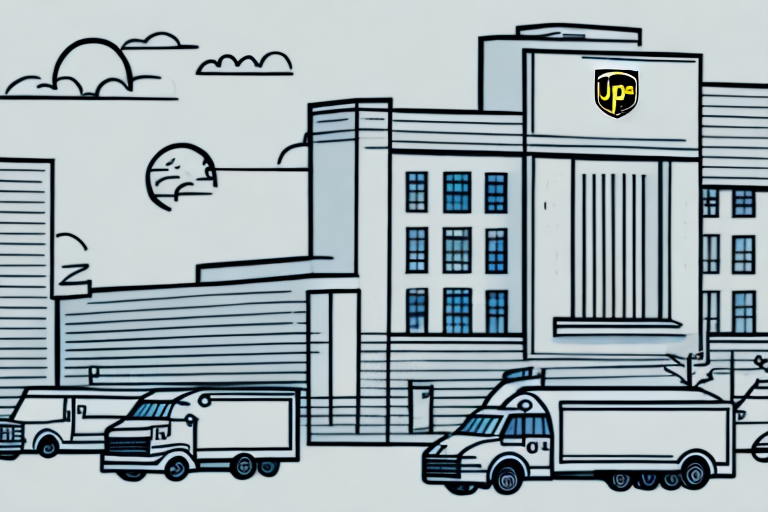History and Evolution of the US Mail System
The US Mail System has a rich history that dates back to colonial times. Initially, letters and packages were transported by horse and wagon, creating a rudimentary and often unreliable service. In 1775, Benjamin Franklin was appointed by the Continental Congress as the first Postmaster General, marking the official establishment of the US Post Office.
19th Century Innovations
The introduction of the steam engine and railroads in the 19th century revolutionized mail delivery, bringing much-needed organization and speed. This era saw the standardization of fees and delivery schedules, significantly improving the efficiency of the mail system.
20th Century Developments
In the 20th century, the US Postal Service (USPS) was established as a government agency. This period also witnessed the expansion of services beyond traditional mail, including package delivery, passport processing, and money orders. Today, the USPS serves over 160 million addresses across the United States, including remote areas underserved by other delivery services.
Regulation and Governance
The USPS operates under the oversight of the US Congress and the Postal Regulatory Commission. This regulatory framework ensures that the USPS maintains financial sustainability while providing universal service to all Americans.
Financial Sustainability
The Postal Accountability and Enhancement Act of 2006 requires the USPS to pre-fund retiree health benefits, which has contributed to financial challenges in recent years. Despite these hurdles, the USPS remains committed to adapting and finding solutions to maintain its essential services.
Postal Inspection Service
The United States Postal Inspection Service plays a critical role in safeguarding the mail system. This agency investigates mail-related crimes, including theft, fraud, and illegal drug trafficking, ensuring the security and integrity of mail delivery.
Technological Advancements
Embracing technology has been pivotal in enhancing the efficiency of the US Mail System. From automated sorting to advanced tracking, these innovations have streamlined operations and improved customer service.
Advanced Sorting and Tracking
Modern sorting technology and barcode systems ensure accurate and swift delivery of mail and packages. These technologies minimize errors and allow for real-time tracking, providing customers with up-to-date information on their shipments.
Digital Services: Informed Delivery
The USPS's Informed Delivery service enables customers to preview incoming mail and packages digitally. With over 30 million users as of 2021, this service enhances convenience and security by allowing users to track their deliveries via computer or mobile devices.
Future Technologies: Autonomous Delivery
Looking ahead, the USPS is exploring the use of autonomous vehicles and drones for mail delivery in select areas. These technologies promise to further increase efficiency and reach, particularly in remote or hard-to-access locations.
Importance to Businesses and Individuals
The US Mail System is indispensable to both businesses and individuals, providing essential services that facilitate daily operations and personal communications.
Services for Businesses
- Reliable delivery of invoices and business correspondence
- Affordable package delivery options for e-commerce
- Support for small businesses through competitive shipping rates
Services for Individuals
- Access to letters, bills, and personal correspondence
- Delivery of important documents like passports and Social Security checks
- Essential communication in rural and underserved areas
Economic Impact and Employment
The USPS contributes significantly to the economy, employing over 600,000 people and supporting related industries such as printing, advertising, and packaging.
Future Outlook
Despite facing challenges such as declining mail volumes and financial constraints, the USPS is focused on evolving to meet future demands.
Expanding Package Delivery
With the rise of e-commerce, the USPS is expanding its package delivery services, including same-day and next-day options in select markets. Partnerships with companies like Amazon have also enhanced delivery capabilities.
Sustainability Initiatives
The USPS is committed to reducing its environmental footprint through initiatives like the BlueEarth® Federal Recycling Program and the adoption of electric vehicles. These efforts aim to lower greenhouse gas emissions and promote sustainable practices within the postal system.
USPS vs Private Carriers
While private carriers like FedEx and UPS offer competitive services, the USPS maintains several advantages that make it a preferred choice for many.
Service Comparisons
- The USPS serves all US addresses, including remote areas not covered by private carriers.
- Often more affordable shipping rates, especially for small and bulk shipments.
- Commitment to universal service ensures consistent delivery standards nationwide.
Sustainability Efforts
Unlike many private carriers, the USPS has a strong focus on sustainability, implementing eco-friendly initiatives such as alternative fuel vehicles and promoting paperless communication.
Impact of COVID-19 on the US Mail System
The COVID-19 pandemic significantly affected the USPS, leading to increased demand for package deliveries and posing operational challenges.
Surge in E-commerce
The pandemic accelerated the shift towards online shopping, resulting in a surge in package delivery volumes. This increase helped offset the decline in traditional mail volumes, but also strained USPS resources.
Operational Challenges
To address the increased demand and ensure employee safety, the USPS implemented measures such as expanded leave policies and enhanced safety protocols, including the provision of personal protective equipment and social distancing guidelines.
Role in Mail-In Voting
During the 2020 presidential election, the USPS played a crucial role in facilitating mail-in voting, ensuring that millions of votes were counted securely and efficiently despite the pandemic.
Conclusion
The US Mail System has undergone significant transformations since its inception, adapting to technological advancements and changing societal needs. Despite facing ongoing challenges, the USPS remains a vital institution, committed to delivering reliable and essential services to Americans. By embracing innovation and sustainability, the USPS is well-positioned to continue its legacy as a cornerstone of American infrastructure.






















